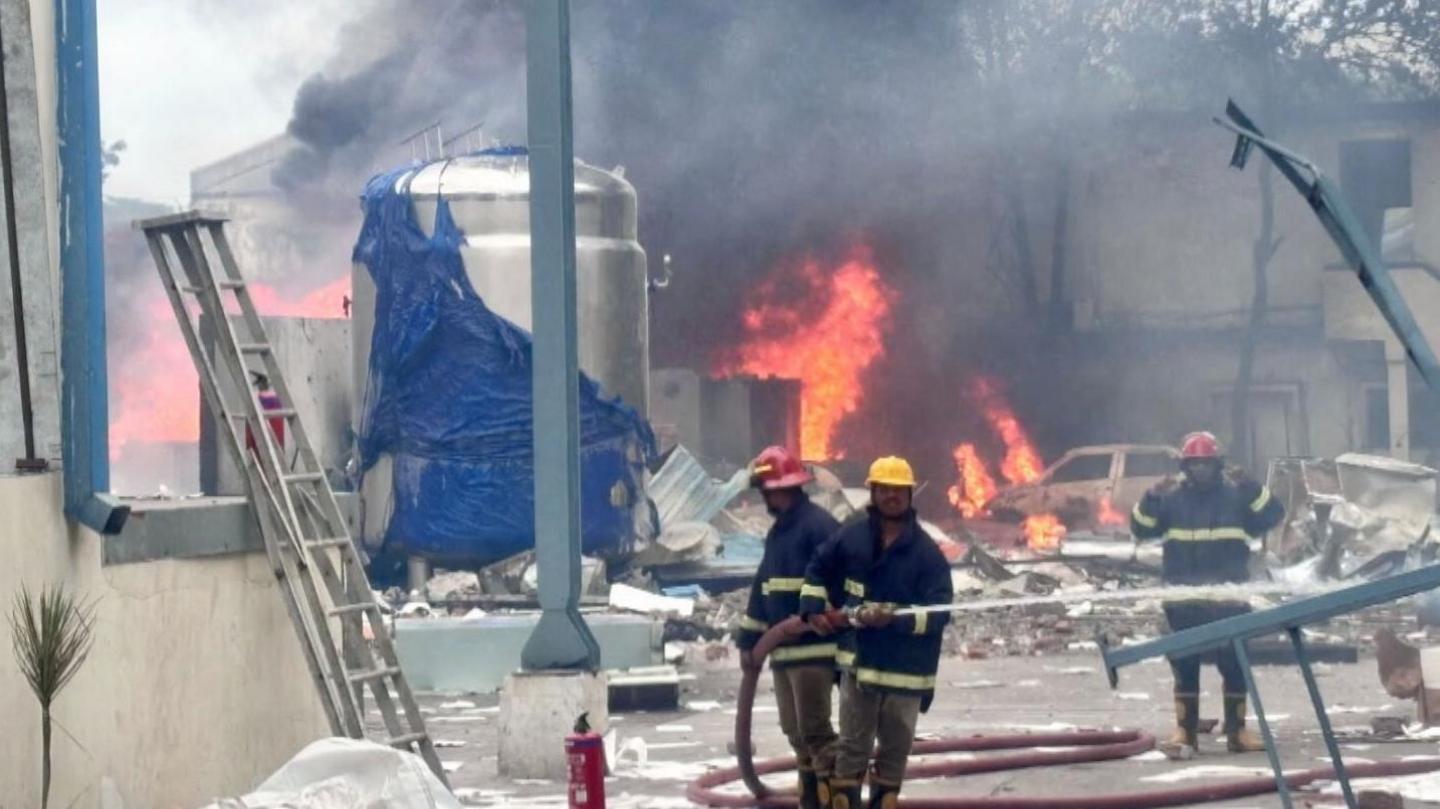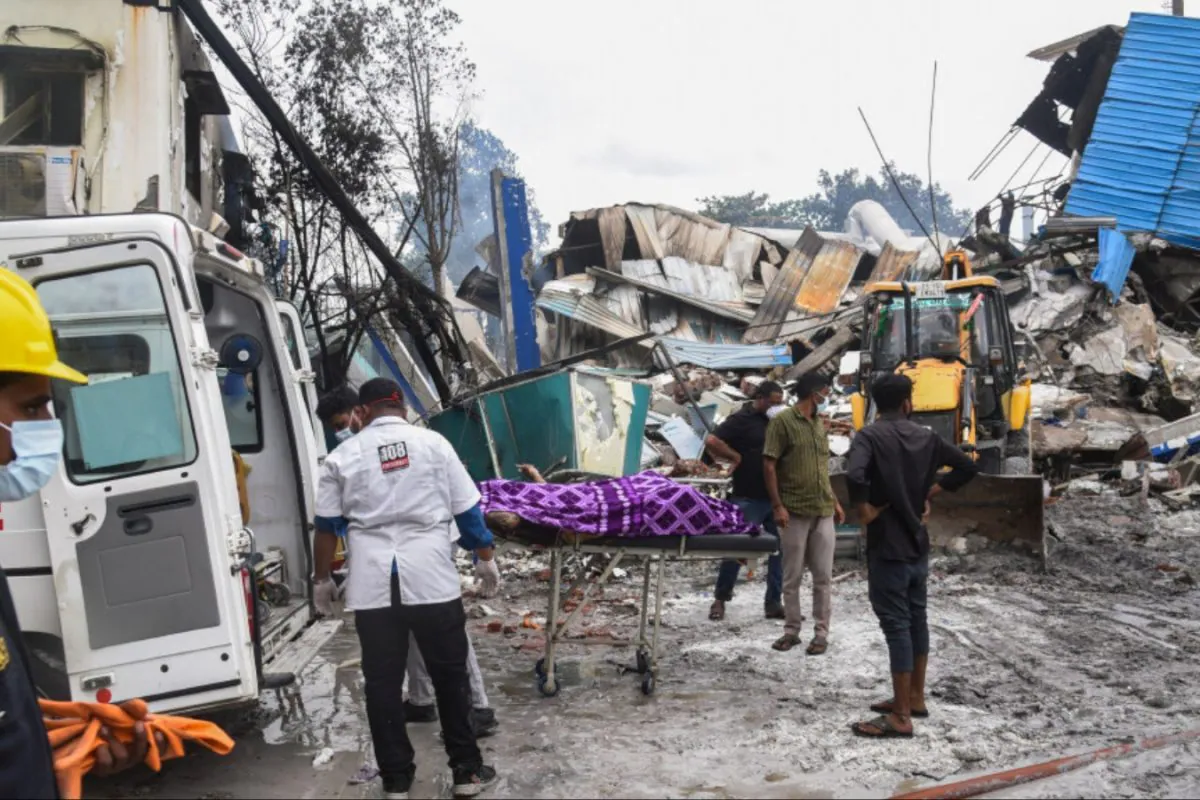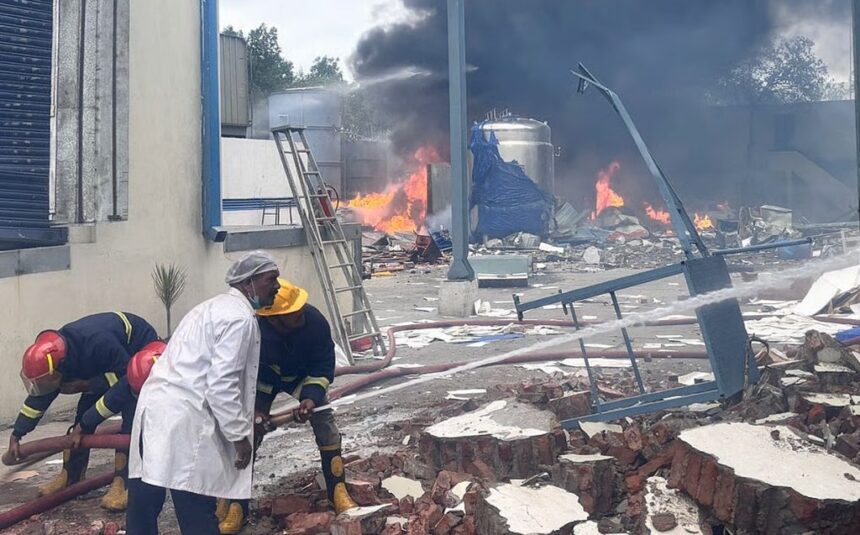NEW DELHI – Dozens have died in a major explosion at Sigachi Industries Pvt. Ltd., a pharmaceutical manufacturing plant in Pashamylaram, Sangareddy, Telangana, India. The blast, which happened at around 9:10 a.m. on Monday, 30 June 2025, has become one of the state’s deadliest industrial disasters.
At least 44 workers lost their lives, and many more suffered serious injuries. As of Wednesday, 2 July, search teams are still looking for 12 missing workers, and there are concerns that the number of victims may rise.
Witnesses in nearby Isnapur reported hearing a loud bang, which set off a large fire and caused the three-storey building to collapse. Thick smoke filled the air and could be seen for miles. Local people rushed to help before emergency crews arrived. Sai Reddy, a resident who helped move the injured, said the scene was chaotic, with people shouting and intense heat making rescue work difficult.
Telangana’s fire chief, G.V. Narayana Rao, shared that 34 bodies were recovered from the ruins, while two more workers died from burns in the hospital. About three dozen people are still being treated, many with critical injuries.

India Conducting DNA Testing
The state’s Health Minister, Damodar Raja Narasimha, said only four victims have been officially identified so far, with DNA testing underway to identify the rest. The delay has left many families waiting for information.
Telangana’s Chief Minister, A. Revanth Reddy, visited the site and called the incident the worst of its kind in the state. The government promised ₹1 lakh (around $1,200) to each victim’s family and formed an official committee to investigate.
Early findings hint at a dust explosion involving microcrystalline cellulose (MCC), a substance that plays a key role in pharmaceutical manufacturing. However, Labour Minister G. Vivek reported that the evidence did not point to a reactor as the source of the explosion.
Sigachi Industries, a major supplier of MCC for medicine, food, and cosmetics, has stopped production at the affected site for 90 days. The blast destroyed much of the factory’s main infrastructure.
Reports highlight that the factory had been operating without key safety features, such as fire alarms, heat sensors, and blast-proof walls. It also lacked a No Objection Certificate (NOC), revealing serious regulatory oversights.
This accident follows several other industrial incidents, including a plant explosion in Andhra Pradesh last August that killed 17 workers. India is known for its large pharmaceutical output, especially in generic drugs and vaccines.

Stricter Safety Checks
But repeated safety failures continue to cause concern. Some specialists think the Sigachi blast resulted from fine powder dust catching fire, while others believe a different type of explosion involving gases may have happened.
Rain on Tuesday made rescue work slower, but teams kept searching for those still missing. The tragedy has led to strong criticism from residents and industry observers, who are demanding stricter safety checks and regular inspections.
Architect and engineer SP Anchuri said safer building designs could help avoid such disasters.
As families mourn their loss, attention has shifted to improving safety standards in India’s growing pharmaceutical industry. The government has promised further support and a full investigation, but the pain remains for those who have lost loved ones. The focus now is on preventing future accidents and protecting workers in similar factories.
Sources: Al Jazeera, Express.co.uk















